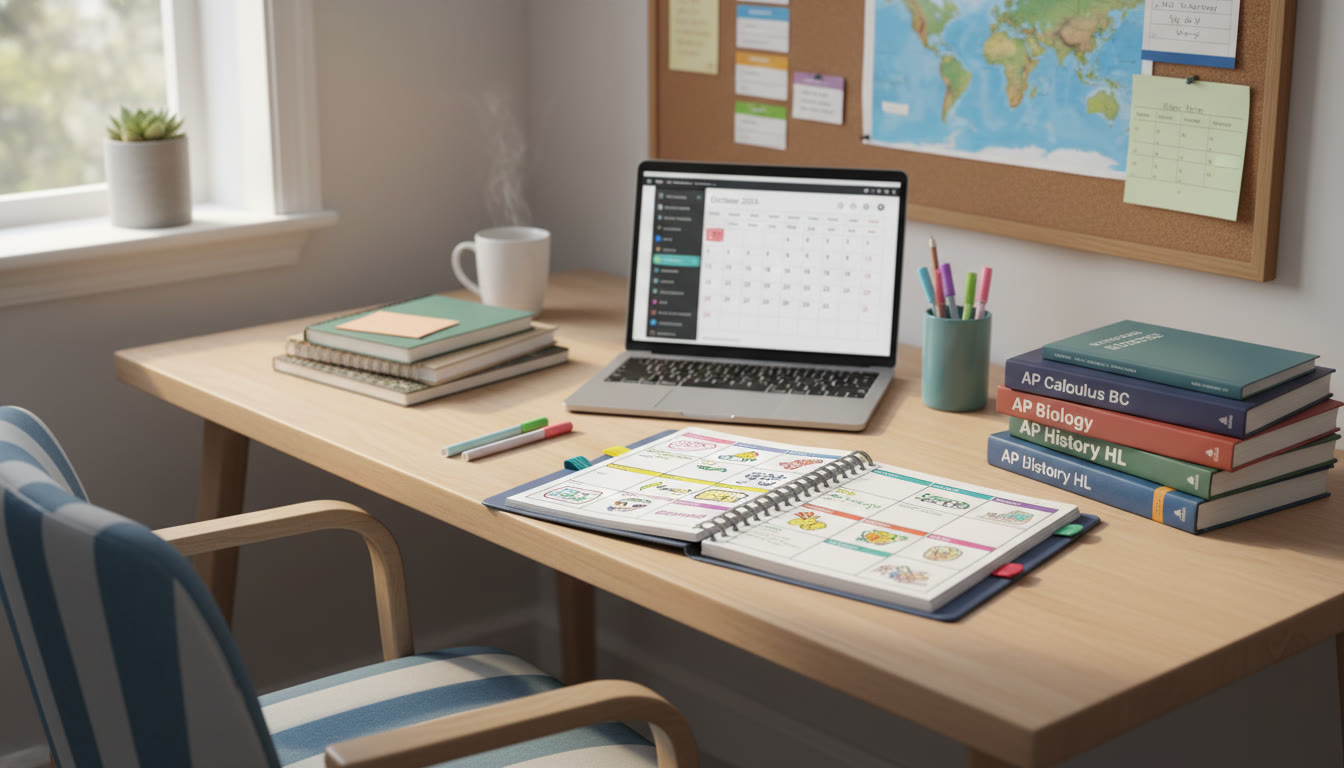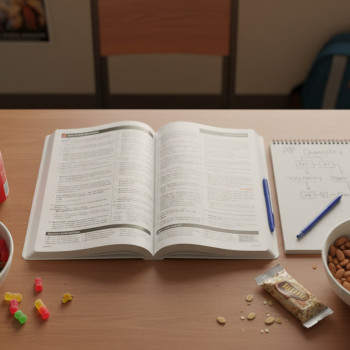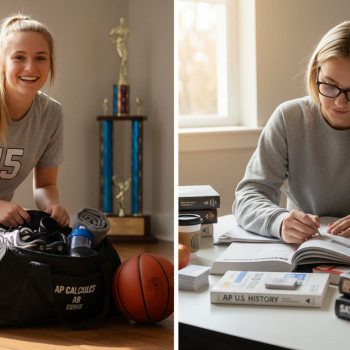Why Subject Sequencing Matters: A Friendly Roadmap
Choosing which AP (Advanced Placement) course to take alongside your HL (Higher Level), AL (Advanced Level), or CBSE core subjects isn’t just an administrative checklist — it’s a strategic decision that shapes your academic confidence, college applications, and long-term subject mastery. Think of your course load like a playlist: the right combinations build momentum, reinforce learning, and make study sessions feel purposeful instead of chaotic.

Big-picture benefits of thoughtful sequencing
- Reinforces overlapping skills (e.g., quantitative reasoning across AP Calculus and IB HL Math).
- Reduces cognitive friction when topics overlap (less relearning, more depth).
- Optimizes college-credit potential and positions you for stronger recommendations.
- Balances workload so you avoid burnout while still challenging yourself.
Below you’ll find practical pairings, why they work, sample weekly rhythms, and how to tweak choices based on your goals (college credit, subject passion, or exam score targets). Along the way I’ll point out where personalized tutoring—like Sparkl’s 1-on-1 guidance, tailored study plans, expert tutors, and AI-driven insights—can make a real difference.
How to think about pairing: three guiding principles
1. Align cognitive skills
Match courses that require complementary thinking. If one subject is heavy on abstraction (IB HL Physics), pair it with an AP that builds the same muscles (AP Physics C or AP Calculus AB/BC). This alignment lets your brain apply familiar frameworks across contexts.
2. Stagger assessment peaks
Different programs have different major assessment times (IB HL internal assessments and final exams, AP exams in May, CBSE board exams typically in March–April). Try to avoid taking three subjects that peak at the same time. If you do hit overlapping periods, plan a revision calendar months in advance or get targeted, time-boxed tutoring.
3. Balance depth and breadth
Pair a deep, time-intensive HL/AL course with an AP that offers breadth but is more modular (e.g., AP Psychology or AP Human Geography). This ensures you get intellectual variety without doubling down on the same kind of heavy workload.
Practical Pairings: AP + IB HL
Here are tested pairings by subject families. For each pairing I’ll explain the fit, typical advantages, and small study-plan suggestions.
STEM Pairings
- IB HL Math (Analysis and Approaches) + AP Calculus BC
Why it fits: Both demand rigorous problem solving, calculus fluency, and proof-style reasoning. AP Calculus BC provides concentrated calculus practice, while HL Math extends to broader topics and theoretical depth.
Study tip: Use AP BC problem sets to build speed and fluency; reserve IB-style questions for deeper conceptual sessions.
- IB HL Physics + AP Physics C (Mechanics/Electricity & Magnetism)
Why it fits: AP Physics C is calculus-based and maps directly onto HL Physics topics—great for students who enjoy lab work and quantitative problem solving.
Study tip: Coordinate lab notebooks and experiment summaries—internal assessments from HL labs often dovetail with AP practical understanding.
- IB HL Chemistry + AP Chemistry
Why it fits: Substantial content overlap with different exam styles. AP provides focused content review and practice exams; HL Chemistry builds inquiry and research skills.
Humanities and Social Sciences Pairings
- IB HL English (Literature) + AP English Literature
Why it fits: Both emphasize close reading and literary analysis. AP workshop-style practice for timed essays helps with IB exam components and vice versa.
- IB HL History (e.g., History: Europe/Americas) + AP United States History or AP World History
Why it fits: The pair lets you approach big historical narratives from multiple exam lenses—IB’s depth and themes, AP’s document-based practice.
- IB HL Economics + AP Macroeconomics/Microeconomics
Why it fits: AP courses cover core economic models in a modular way; HL Economics adds more global context and assessment types.
Arts and Languages Pairings
- IB HL Language (e.g., Spanish HL) + AP Spanish Language and Culture
Why it fits: Both require strong communicative skills—pairing boosts speaking and cultural context with AP’s exam-style proficiency tasks.
- IB HL Visual Arts + AP Studio Art Portfolio (where available)
Why it fits: Portfolios serve both programs well—IB’s exhibition components and AP’s portfolio requirements are mutually reinforcing.
Practical Pairings: AP + CBSE Core
CBSE emphasizes conceptual understanding and exam preparation, often with a broad national syllabus. Here’s how AP can complement CBSE strengths.
Science Pairings
- CBSE Physics + AP Physics 1/2 or AP Physics C
Why it fits: CBSE’s foundation in physical concepts pairs well with AP’s problem-solving and exam technique. AP Physics 1/2 is algebra-based and aligns well with CBSE syllabus pacing; Physics C is ideal for students who have strong math readiness.
- CBSE Chemistry + AP Chemistry
Why it fits: AP’s intensive practice and lab-focused questions can sharpen CBSE students for board exams while preparing for college-level thinking.
- CBSE Biology + AP Biology
Why it fits: Both emphasize core biological concepts; AP’s lab investigations and extended-response practice complement CBSE’s exam style.
Math and Computer Science
- CBSE Mathematics + AP Calculus AB/BC
Why it fits: AP Calculus deepens calculus readiness for STEM beyond CBSE board-level calculus and supports university preparation.
- CBSE Computer Science + AP Computer Science A
Why it fits: AP’s Java-based curriculum and exam structure give practical programming depth and exam practice that align with CBSE CS fundamentals.
Which Pairings to Avoid (or Approach with Caution)
Some combinations can create overload or duplicate exactly the same cognitive demand. Consider avoiding or carefully managing:
- Two extremely heavy quantitative courses in one term (e.g., IB HL Math + AP Calculus BC + CBSE Math board prep) unless you have a spaced schedule and support system.
- Multiple essay-heavy humanities in the same semester (e.g., IB HL English + AP English Language + heavy history course), unless you stagger deadlines and practice timed writing.
- Triple lab-science load with overlapping major assessments (two lab-heavy HLs plus AP Chemistry, for instance) — this can create assessment clustering.
Sample Weekly Rhythms: How to Schedule Study Time
Below are three sample rhythms depending on whether a student’s priority is balance, deep exam prep, or subject passion.
| Priority | Weekly Hours (Study + Homework) | Focus | Example Pairing |
|---|---|---|---|
| Balanced | 12–15 | Consistent practice, spaced repetition | IB HL Math + AP Calculus BC |
| Exam Prep | 15–20 (seasonal spike) | Timed practice tests, past papers, exam technique | CBSE Chemistry + AP Chemistry |
| Passion-Driven | 18–25 | Project-based learning, deeper research | IB HL Visual Arts + AP Studio Art |
How to Customize Pairings for Your Goals
Goal 1: Maximize college credit
Pick APs that colleges commonly accept for credit (Calculus, Chemistry, Physics, English, Economics, Statistics, Psychology). Pair those with HL or CBSE courses that deepen conceptual understanding so that you can score well on AP exams without burning out. A focused 1-on-1 tutoring block led by an expert—like Sparkl’s tutors who tailor study plans and track progress—can raise efficiency dramatically.
Goal 2: Build subject mastery for future majors
If you’re aiming for a STEM major, pair HL Math or HL Physics with AP Calculus and AP Physics C. For social sciences or humanities, combine IB HL History with AP Government or AP Comparative Government. The goal is cumulative skill-building: content + methodology + assessment practice.
Goal 3: Keep options open
Mix one rigorous HL with one exploratory AP (e.g., HL Biology + AP Psychology). This opens doors to different college majors while protecting GPA and wellbeing.
When to Bring in Tutoring and How to Use It Well
Tutoring is not just crisis management. The best tutoring is anticipatory: it fills skill gaps before they widen and creates tailored study strategies.
- Use 1-on-1 tutoring for tailored pacing and targeted practice (math problem types, lab design, extended essays).
- Request tutors who have experience across both systems—AP exam strategies differ from IB internal assessment expectations and CBSE board tactics.
- Leverage AI-driven insights where available to identify weak subtopics quickly, then target short, focused tutor sessions for remediation.
Sparkl’s personalized tutoring model—combining expert tutors, tailored study plans, and AI-driven insights—fits naturally here, especially when you’re juggling different exam formats. Short, focused sessions can boost confidence and exam performance without adding excessive hours.
Real-world Examples: Three Student Profiles
Profile A: The Aspiring Engineer
Context: Loves math, aiming for engineering in the U.S.
- Typical pairing: IB HL Math + AP Calculus BC + IB HL Physics or AP Physics C.
- Weekly rhythm: 16–20 hours; morning problem sets, weekend timed AP practice.
- Support: Targeted tutoring on multivariable calculus or E&M; lab report coaching for IB internal assessments.
Profile B: The Balanced Humanities Student
Context: Interested in international relations or law.
- Typical pairing: IB HL History + AP Comparative Government + IB HL English.
- Weekly rhythm: 12–16 hours; focused sourcing practice and timed essays.
- Support: Essay workshops, thesis development sessions, and guided document-based practice.
Profile C: The CBSE-to-US Transitioner
Context: CBSE background, considering U.S. universities.
- Typical pairing: CBSE Physics/Chemistry + AP Chemistry or AP Calculus AB.
- Weekly rhythm: 14–18 hours; combine CBSE board prep with AP-style problem practice.
- Support: Brushing up on AP exam pacing and tackling multiple-choice strategies via one-on-one tutoring.
Checklist Before You Commit to a Pairing
- Map major exam dates on a single calendar and check for clustering.
- Assess which skills overlap and which require different study methods.
- Consider teacher availability, lab resources, and your personal resilience to high workload.
- Plan at least one semester of flexible study to adjust if a course is harder than expected.
Common Myths and Reality Checks
Myth: More APs always equals better college prospects
Reality: Admissions officers look for intellectual curiosity and success relative to opportunity. A well-sequenced, sustainable set of AP + HL/CBSE courses where you perform strongly is more persuasive than a bloated transcript with low performance.
Myth: You only take APs if you want college credit
Reality: APs teach concise exam skills, time management, and subject depth. Even where colleges don’t grant credit, AP study can strengthen first-year college readiness.
Quick Reference Table: Best APs to Pair by HL/AL/CBSE Core
| Core | Best AP Pairing | Why |
|---|---|---|
| IB HL Math | AP Calculus AB/BC | Direct calculus overlap; builds speed and exam technique. |
| IB HL Physics | AP Physics C | Calculus-based physics problems and mechanics/electromagnetism focus. |
| IB HL Chemistry | AP Chemistry | Lab practice and conceptual overlap. |
| CBSE Physics | AP Physics 1/2 or Physics C | AP sharpens problem-solving and exam pacing depending on math readiness. |
| CBSE Mathematics | AP Calculus AB | Extends calculus ideas, beneficial for STEM applicants. |
| IB HL English | AP English Literature | Both emphasize close reading and interpretative essays. |
Final Tips: Make the Plan Yours
There’s no single perfect blueprint. The best plan respects your curiosity, balances workload, and prepares you for the next step. Start by mapping course content to skills (calculus, lab technique, essay writing), then stagger assessments and plug in short, focused supports like tutoring.
And if you want tailored help building and executing a study plan that fits your unique mix of AP, HL, AL, or CBSE courses, consider personalized options. Tutors who design one-on-one guidance and use targeted, data-driven practice (like Sparkl’s approach) can make the difference between scrambling in May and heading into exams calm and prepared.
Parting thought
Your transcript tells a story—let it be one about thoughtful choices and consistent effort. When you sequence subjects with intention, you don’t just survive exams; you learn smarter, retain more, and carry skills forward into college and beyond.

Ready to draft a semester map? Start with your calendar, pick two complementary subjects, and test the rhythm for six weeks. If you need a tailored study plan, expert feedback, or targeted practice sessions, a short tutoring consultation can save months of trial and error—and make your AP + HL/CBSE journey both rewarding and sustainable.




















No Comments
Leave a comment Cancel